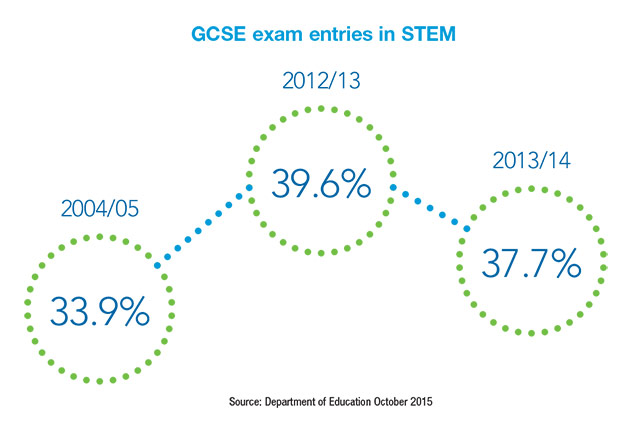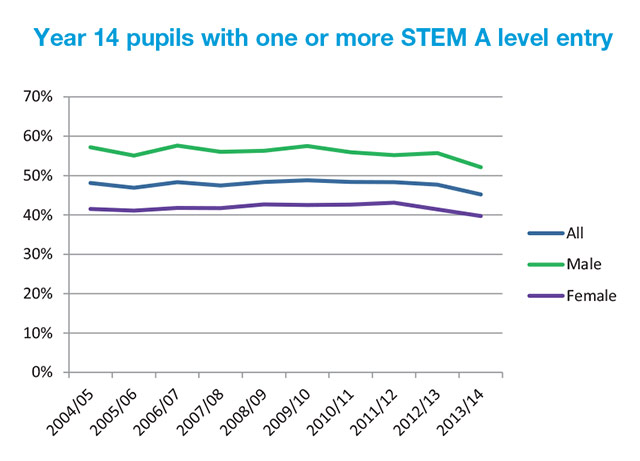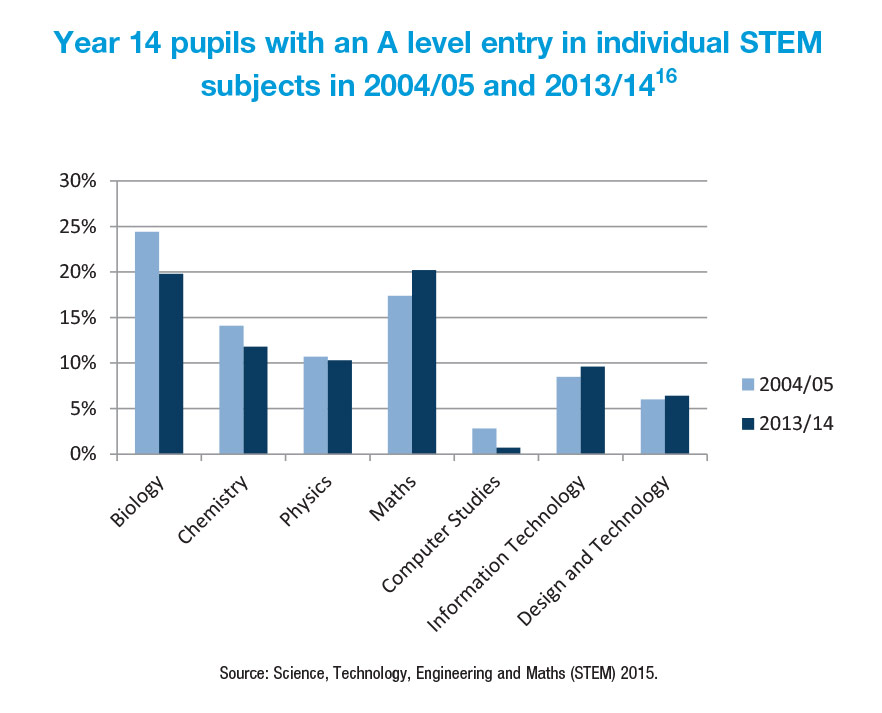Performance in STEM
A skilled workforce in Northern Ireland has been highlighted as a major necessity in developing the local economy in a post-Brexit era, with that in mind agendaNi analyses the current performance of STEM subjects in education.
A declining interest in Science, Technology, Engineering and Mathematics (STEM) at primary school level and further shortage of uptake in subjects such as maths, physics and computing at A Level in Northern Ireland were first recognised by the Department of Education (DE) and the Department for Employment and Learning (DEL) back in 2009 and prompted the Success Through STEM strategy implemented in 2011.
In November last year, a report prepared for the Committee for Education considered the progress of the strategy and highlighted a need for urgent action in STEM skills development to as a foundation for Northern Ireland’s economic growth.

The report found that while in the decade from 2004/05 to 2013/14 there has been a rise from 33.9 per cent of all GCSE exam entries in STEM to 37.7 per cent, the 2013/14 statistics actually represent a fall from the levels of 2012/13. Uptake for males and females throughout the decade remained consistent, however, males represented a greater proportion of exam entries.
The statistics for STEM at A level are also varying. Overall the proportion of exam entries in STEM subjects have increased from 37 per cent to 41.1 per cent in the past 10 years. A Department of Education Business Plan for 2015/16 aimed to increase the proportion of STEM exam entries from the 2011/12 figure of 40.9 per cent, but two years later that figure had only increased by 0.2 per cent. When the statistics are reshaped to consider the proportion of students with an entry in one or more STEM subjects, the results actually represent a decrease from 48 per cent in 2004/05 to 45 per cent in 2013/14. The decrease of 3.1 per cent in the proportion of Year 14 pupils with one or more exam entry in any STEM subject since 2011/12 does not bode well for the DE’s Corporate Plan 2012-15 goal to deliver a 5 per cent increase, although official comparable figures for 2014/15 have not yet been published.
As part of the original Success Through STEM strategy, the Department of Education attempted to address a lack of STEM specialisation in teaching at both primary and post-primary level through a Continuing Professional Development (CPD) framework. By 2015 it said that over 3,500 teachers had attended STEM CPD initiatives for GCSE and A level since 2011/12 and that the Education Authority had provided training on its STEM Primary Project to 302 schools over a six-year period.


Cuts
However, despite the progress, in 2015/16 the Department of Education cut funding for CPD initiatives by £743,000. This included: a £316,000 reduction in STEM careers education, information, advice and guidance; £214,000 for STEM Teachers’ CPD; and £97,000 for Careers CPD. The Department also cut all of the £84,392 funding for the Smart Technology Programme run by Sentinus in 2015/16, a programme aimed at supporting the development of teachers’ skills in STEM. A one-year-on review of the 2011 Success Through STEM strategy by the Department described Sentinus as “the main STEM frontline provider for schools” and noted its “key role” in delivering the DE’s commitments. However, funding for Sentinus was more than halved in 2015/16 from £659,851 to £300,000.
The report concluded with a number of recommendations to be taken forward in relation to STEM performance in Northern Ireland. Issues raised include: many primary teachers feeling ill-equipped to teach STEM; lower levels of teaching time for primary science when compared internationally, low proportion of teachers emphasising science investigation in lessons; and an overall low uptake of the STEM module by primary pupils.
At a higher level it suggested consideration for the decline in A level students taking STEM exams, a decline in performance in maths from primary to post-primary education and the higher proportion of male students studying STEM. It pointed out concerns around reductions to CPD in STEM, careers advice and guidance in schools, while highlighting other international practices such as availability of bursaries to attract STEM graduates to teaching.






